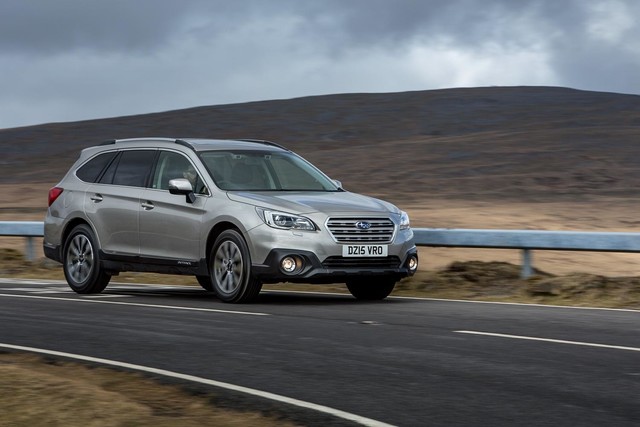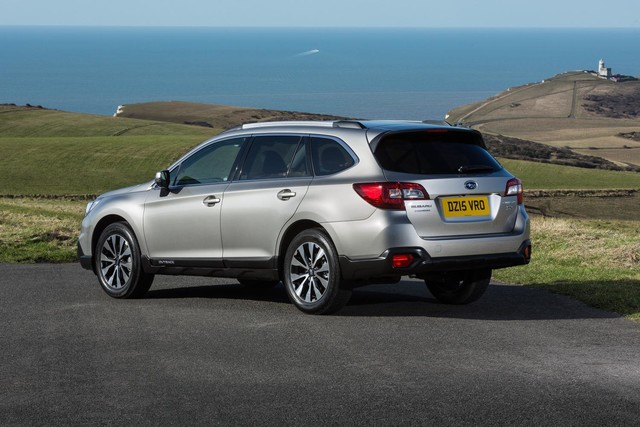It's a while since Subaru sold a car called Legacy in this country, but we still have the Outback, which is really a Legacy estate adapted to suit the small but important demand for non-SUVs with a measure of off-road capability. The fourth-generation Outback was good in some ways and very disappointing in others.
With the fifth-generation, on sale from the start of April 2015, Subaru has attempted to address previous criticism. So, for example, the interior, while still not particularly inspired (this being one thing that seems to be a long way from the company's comfort zone), is at least not quite so low-rent for a range with an average price of around £30,000 than was previously the case.
Although it looks similar to the previous Outback, this one is in fact structurally different, and one result is that there's more passenger room. Four six-foot adults can be seated quite comfortably. The luggage capacity is greater, too, at 559 litres with the rear seats in place. That includes an extra 47 litres which extends astonishingly deeply under the boot floor behind the back axle.
But there's no space for a spare wheel. All Outbacks are fitted with a tyre repair kit, which is a concern. Can you imagine being unable to fix a puncture (quite possible with one of these kits, which can deal with small holes in the tyre tread but not damage to the sidewall or wheel) when the only exit route from your current location is up a steep and muddy slope?

This is by no means an impossible scenario, since the Outback is very capable off-road. On the UK press launch there were no muddy slopes, but we did cover some pretty tough ground on Salisbury Plain (avoiding only the deepest holes which would swallow anything smaller than a tank) and the car negotiated everything it was pointed at with ease.
In some ways it's nearly as impressive on-road too, though there are problems. Subaru has improved the handling substantially by firming up the suspension, and you can feel the relationship to the best of the old high-performance Impreza cars as you swish through a series of corners.
The ride, however, is disappointing. The first car I drove was an SE Premium fitted with 18-inch wheels, and it went over the bumps on the A34 like it had a pogo stick fitted to each corner. The lower-spec SE, running on 17s, wasn't much better, though there was an enough of an improvement to suggest that Subaru's chassis people intended it to be fitted with 16s. I'd like to try one like that, but Subaru doesn't sell such a thing.
The two engines in the range are a 148bhp 2-litre diesel and a 173bhp 2.5-litre petrol, and for me the diesel is the one to go for. It makes the Outback more expensive, but you'll probably get that back at resale time, the performance is better despite the power shortfall and, even though it doesn't have start/stop which the petrol does, it's still more economical.

You can also save money by choosing a six-speed manual gearbox rather than the Lineartronic CVT automatic which is an option with this engine and standard with the 2.5.
Both engines are admirably quiet in normal motoring but become very harsh at high revs. This effect is noticeably only if you're pushing harder than most owners normally will, though since the fastest Outback of all - the diesel manual - takes 9.7 seconds to accelerate from 0-62mph you'll certainly encounter it if you're in a hurry.
To close on a high note, the Outback has good rear visibility (this being far more of a Subaru speciality than interior design is) and both versions are well-equipped. The SE has cruise control, automatic LED headlights, heated front seats, privacy glass, a reversing camera and roof rails. You also get an infotainment system with satellite navigation, smartphone and Bluetooth connectivity and a seven-inch touchscreen as standard. Meanwhile, the SE Premium has all of this plus a sunroof, keyless entry, push-button start, leather upholstery and a powered tailgate.



